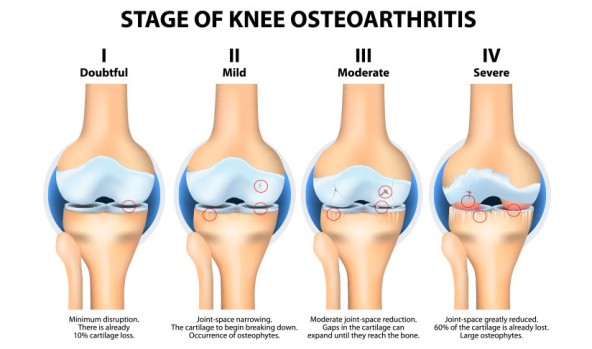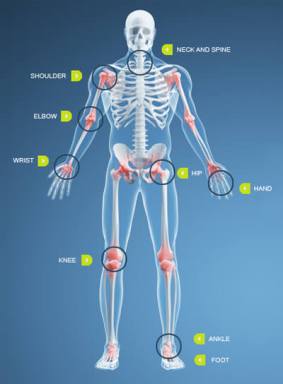What is Knee Osteoarthritis?
Osteoarthritis, commonly known as tear arthritis, is a condition in which the natural cushioning between the joints – cartilage wears away. When this happens the bones of the joints rub more closely against one another with less of shod absorbing benefits of cartilage.

What causes Knee Osteoarthritis?
There are five major predisposing factors for Osteoarthritis of the knee:
Gender: Women above the above the age of 55 yrs are most likely to get affected by the Osteoarthritis of the knee.
Age: As one gets older, the knee cartilage loses its ability to heal and that’s the reason why old age is one of the factors why you may be affected.
Heredity: Genetic mutation may be one of the factors responsible for knee Osteoarthritis
Repetitive Stress: This could be one of the main reasons for people getting affected by Osteoarthritis of the knee.
Athletics: Sportsmen playing high intensity sports like Kabaddi, Tennis and Football areprone to knee injuries.
How is Knee Osteoarthritis Treated?
Weight Loss
If you seriously decide to lose weight then it will definitely do a deal of good to your health.
Exercise
Consult a good physiotherapist and strictly follow the exercises prescribed by him; in this way… you’ll feel better about your physical health.
Pain Relievers
If you want to avoid going for a surgery then pain relievers are probably the best option for you… take your medicines as prescribed by your doctor.
Treating Knee Osteoarthritis with Arthroscopy
Arthroscopy
Arthroscopy is a surgical procedure orthopedic surgeons use to visualize, diagnose and treat problems inside the joint.
Arthroscopy for Arthritis?
Arthroscopy cannot treat arthritis and hence its use is very limited in osteoarthritis. It may be required in acute conditions when there is a meniscus tear or a locked knee in a patient with osteoarthritis.
How is Arthroscopy performed?
Arthroscopic surgery although much easier in terms of recovery than open surgery still requires the use of aesthetics and special equipment’s in a hospital operating room or outpatient surgical suite. A small incision about the size of a buttonhole is made and then the arthroscope inserts several incisions to see other parts of the joint or insert other instruments.
Subscribe for more information on Dr. Rajani blog: https://www.dramynrajani.com/blog/

 The surgery for total knee replacement may last around 45 mins to one hour and involves an incision over your knee. The thighbone and shinbone will be cut to formulate them for the new pieces. The patella will be stimulated at the beginning of the technique, and later bone cement will be used to secure the prosthesis to it. This is the customary way the procedure has been performed. Some modifications to the process can be made and partial knee replacements are options for certain joints, as well. You will generally leave the hospital within a few days of the process and attend a rehabilitation flair that will help you get used to your current knee and ultimately help you return to all your activities and expectantly many that you gave up due to aching or incapability of your “old” knee to grip.
The surgery for total knee replacement may last around 45 mins to one hour and involves an incision over your knee. The thighbone and shinbone will be cut to formulate them for the new pieces. The patella will be stimulated at the beginning of the technique, and later bone cement will be used to secure the prosthesis to it. This is the customary way the procedure has been performed. Some modifications to the process can be made and partial knee replacements are options for certain joints, as well. You will generally leave the hospital within a few days of the process and attend a rehabilitation flair that will help you get used to your current knee and ultimately help you return to all your activities and expectantly many that you gave up due to aching or incapability of your “old” knee to grip.